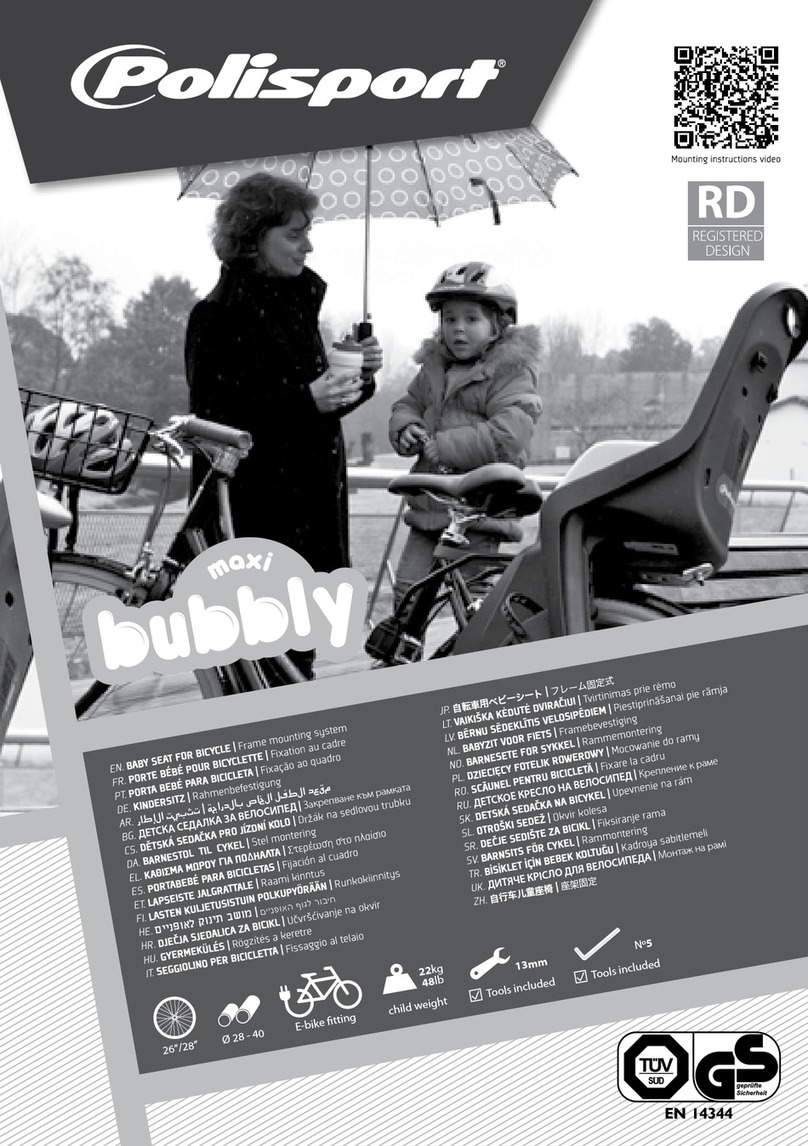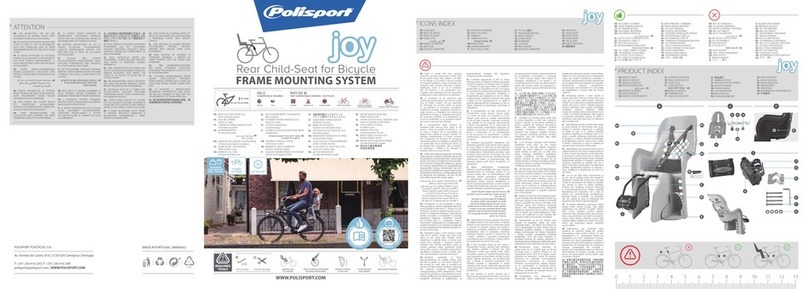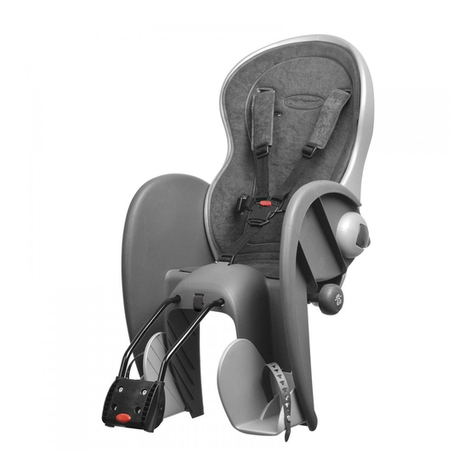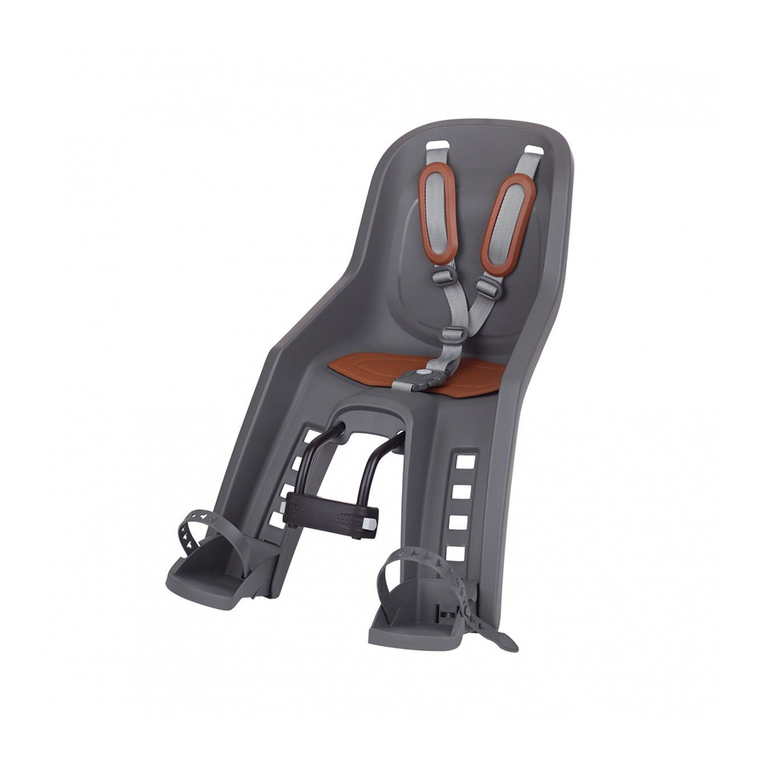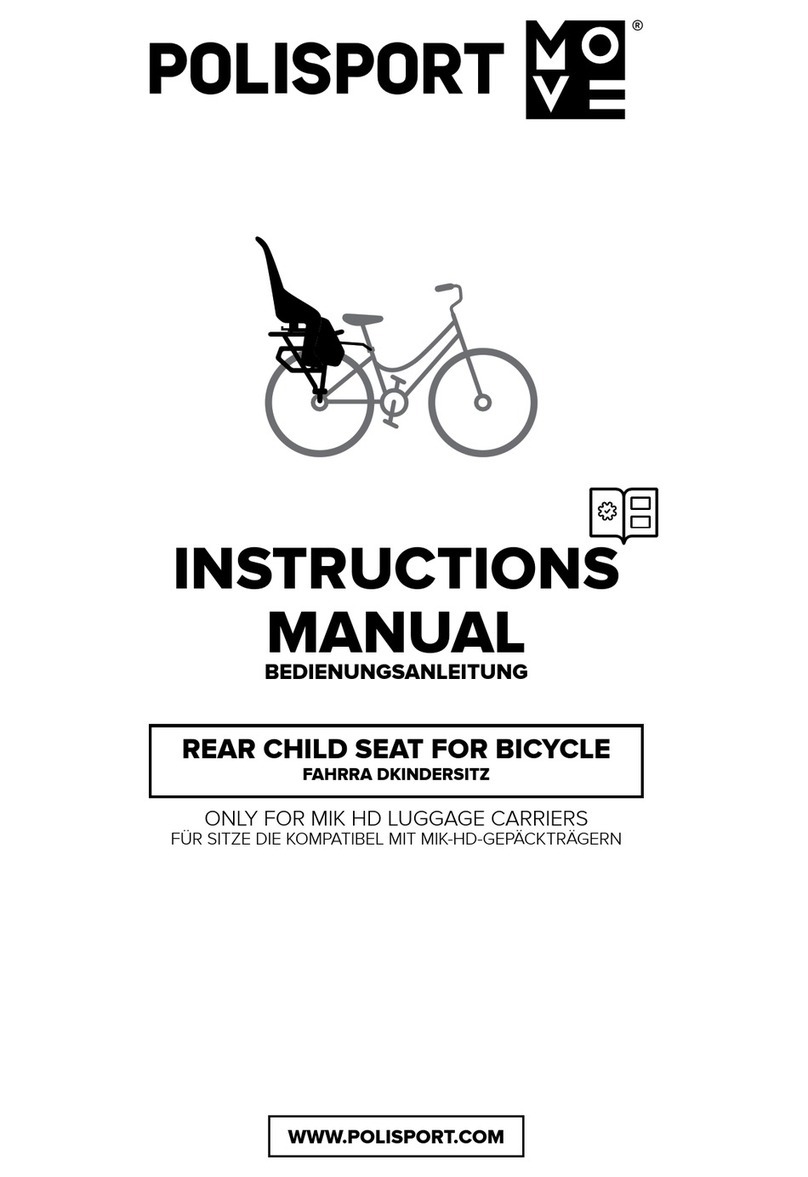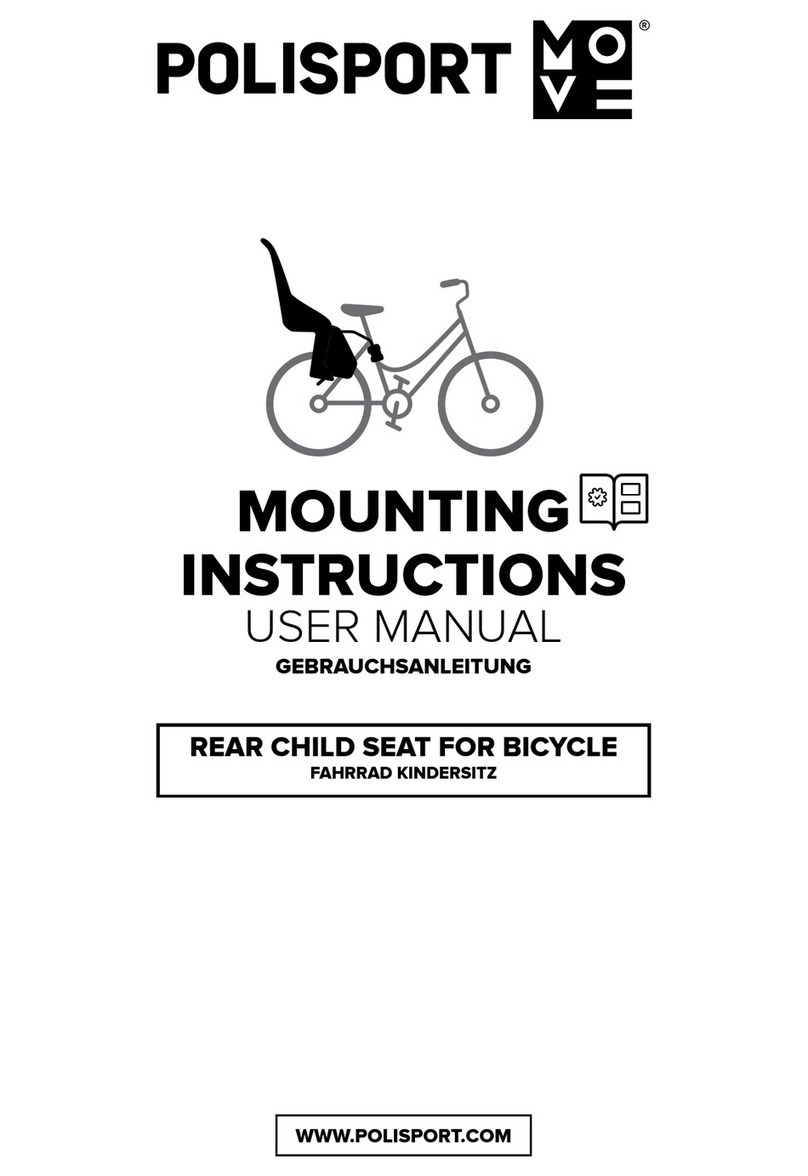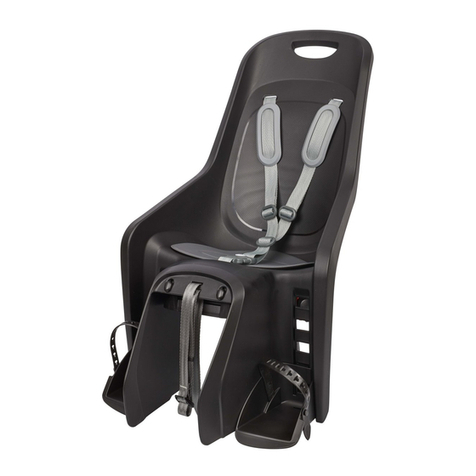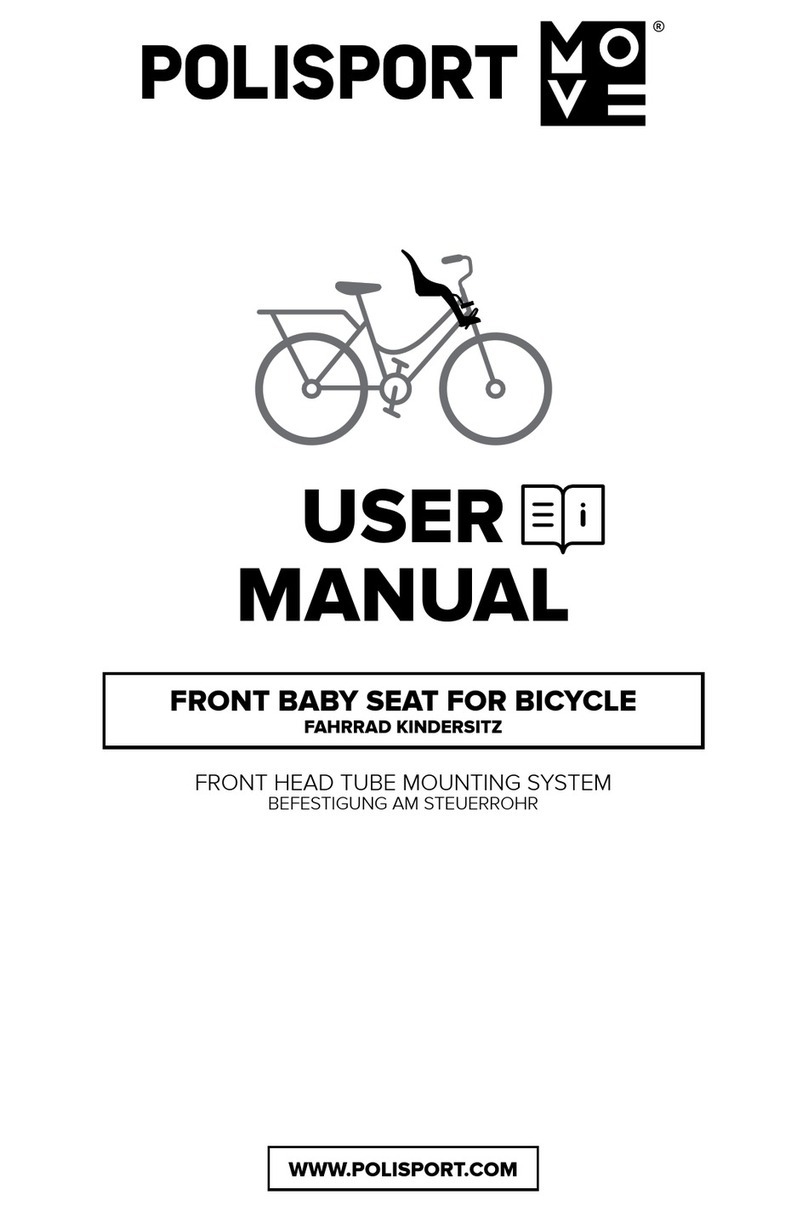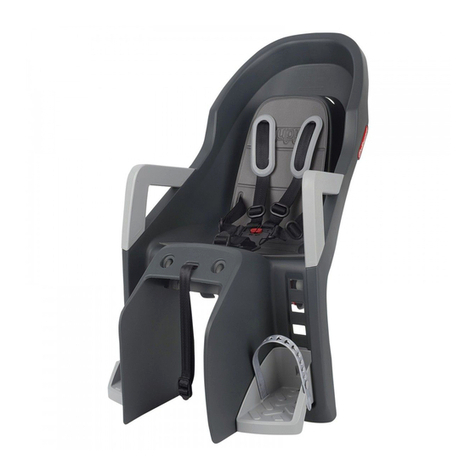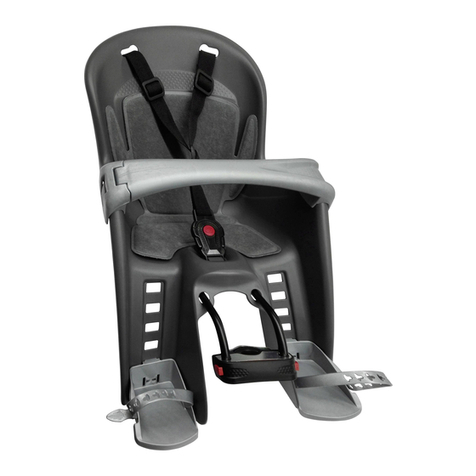
10
06. CAUTION NOTES
07. INSTRUCTIONS FOR USE
• The bicycle to which the carrier is attached must be in good
working order, of a type appropriate for the additional load,
and of proper size and adjustment for the rider. Check the
bicycle user manual or the bicycle manufacturer to obtain
information and to make sure the bicycle model is appropri-
ate to carry a bicycle carrier according to these characteris-
tics.
• Tighten fasteners securely, and check them frequently.
• Do not carry a child who is too young to sit comfortably and
independently in the carrier. (A pediatrician should be con-
sulted before any child younger than one year is carried, or if
the child has any disabilities.)
• Ensure initially, and check from time to time, that the child’s
weight does not exceed the load limit of the carrier.
• Additional luggage or accessories should not be attached to
the carrier, as they may exceed the load limit, and may lessen
stability. Total load limit for the carrier is 18 kg (40 lbs).
• Make no modifications to the carrier other than as set forth in
this manual.
• Do not allow any of the child’s body, clothing, shoelaces, or
toys to come in contact with moving parts of the bicycle.
• Always attach the retention system snugly around the child.
• When no child is being carried, fasten the retention system
buckles so the straps do not hang loosely.
• Ensure the rider and child are wearing approved bicycle hel-
mets (CPSC, ASTM F1447 or Snell) .
• Check your local city, country or state laws relating to the
carrying of children in carriers attached to bicycles.
• The rider must be at least 16 years of age; Check your local
city, country or state laws pertaining to this issue.
• Make sure that the weight of the child and items in the stor-
age area does not exceed the maximum capacity of the child
seat or the rack, and check this at regular intervals. Check the
weight of the child before using the CARRIER. Under no cir-
cumstances should you use the carrier to transport a child
whose weight is above the permissible limit. Do not use the
child carrier to carry any pets or objects other than a properly
sized child.
• Never ride in inclement or hazardous conditions.
• A load of a carrier may lessen the stability and alter the riding
characteristics of the bicycle, particularly regarding steering
and braking.
• Never leave the child unattended in the carrier.
• Never leave the child in a carrier with the bicycle supported
only by a kickstand.
• A rear reflector that complies with CPSC regulations must be
visible whether the carrier is on the bicycle or not.
• Before each ride, ensure the mounted carrier does not inter-
fere with braking, pedaling, or steering of the bicycle.
• Never ride the bicycle at night without adequate lighting.
• Always remove the carrier from the bicycle when the bicycle
is being transported on a motor vehicle. This is necessary be-
cause the force of the high wind on the carrier may degrade
or damage the carrier to the point that it will not perform
reliably.
• Presence of a carrier on a bicycle may require alteration of the
method used by the rider to mount or dismount the bicycle.
Care must be taken whenever the rider gets on or off the bi-
cycle.
• Do not allow the child to hold or carry anything while in the
carrier as if dropped it could interfere with the movement of
the bicycle or injure your child or both.
• Secure the child into carrier ensuring that all the retention
belts and straps applied firmly but not so tight as to cause
discomfort to the child. Please check the tightness of the
fasteners during the ride and each time the child in put in or
taken out of the carrier during the ride.
EN
